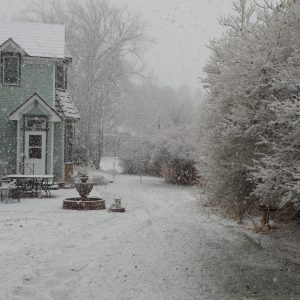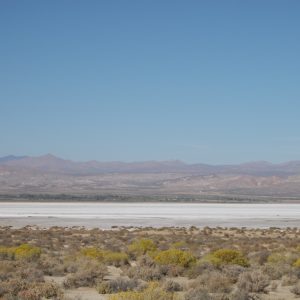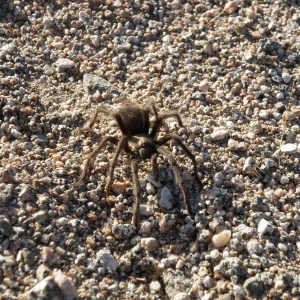It’s been a while since I last wrote, so there is a fair amount of catch up to do. Going back to early November, I had a chance to travel to Tallahassee, FL to take part in the Natural Areas Association annual meeting. This was my first professional conference and it fit very well with my project. I heard many lectures on policies protecting natural areas (ranging from domestic parks, wildlife refuges, to the amazon), LOTS of information on invasive species, and several talks of other interests to me. Along with these lectures, I created a poster to display during the week regarding my project on Great Lakes invasive species. There were plenty of folks to talk with on the myriad issues that inevitably evolve as do the lists of invasives. One of the days we left the conference area and went to St. Mark’s wildlife refuge south of Tallahassee. This was unquestionably my favorite experience of the week. This refuge is extensive, covering habitats supporting red cockaded woodpeckers and gopher tortoises, long leaf pines, and shorebird (and alligator!) communities. The amount of new habitat I had a chance to explore in only a few hours was truly awesome. The biologists who manage the refuge provided a lot of insight into another realm of land management, foreign to me from my desk job with the NPS. This week was a great chance to get out and remember the wonderful diversity of positions available for me to pursue down the road.
After getting back to Fort Collins, it was back to work on the final bits of my project. I finished the design of the website housing the database, edited the species lists one more time, and began working on my webinar presentation for December. Work went well on this, and after a few more weeks, I presented the webinar. I will be spending my last week and a half cleaning up errors corresponding with comments we receive(d) on the database, writing an article for InsideNPS, and reporting on this project for my division’s annual report.
Another great travel experience I recently had was over Thanksgiving weekend when I traveled to visit my roommates family on the western slope of Colorado. The drive through the Rockies was as spectacular as I could have hoped, and seeing the San Juan Mountains on the other side of the state was a treat. While both the Front Range and western slope are significantly drier than I am used to in New England, it was great to see some trees on the drive over the mountain passes along with the pinyon-juniper “forests” of western Colorado. These trees were short and the ground was dry, lacking much of an understory other than sage brush; I suppose it’s like that from west of the Rockies to the Sierras, though. It certainly had its own beauty, though with open viewscapes and the jagged mountains surrounding the otherwise farmland. Upon returning to the Front Range, I stopped in the Black Canyon of the Gunnison NP for a bit. It was extremely impressive, and all the more enjoyable because there were no other visitors in sight. I’ll mark down Sundays in winter as the prime time for visiting parks as they should be seen– in solitude.
Only another week left, this has been a very rewarding and fast way to spend my first six months post graduation.









 Transformation in the desert: sagebrush sheds its seed, as I do the last seed collections of the year in the biting dry wind of the southeast Oregon winter. No significant snow yet, perfect for my final excursions around the resource area spent searching and reflecting. Passing along all of the places I visited for the first time this field season and trying to remember how it used to be warm and even hot. It’s pretty quiet now, and most plants are pretty much hibernating. I’m sure I’ll feel like hibernating too once it starts to snow and gets below zero. But for now I’ll just coast along the empty highways with plant press handy and watch the sun reach all of the beautiful places.
Transformation in the desert: sagebrush sheds its seed, as I do the last seed collections of the year in the biting dry wind of the southeast Oregon winter. No significant snow yet, perfect for my final excursions around the resource area spent searching and reflecting. Passing along all of the places I visited for the first time this field season and trying to remember how it used to be warm and even hot. It’s pretty quiet now, and most plants are pretty much hibernating. I’m sure I’ll feel like hibernating too once it starts to snow and gets below zero. But for now I’ll just coast along the empty highways with plant press handy and watch the sun reach all of the beautiful places.










